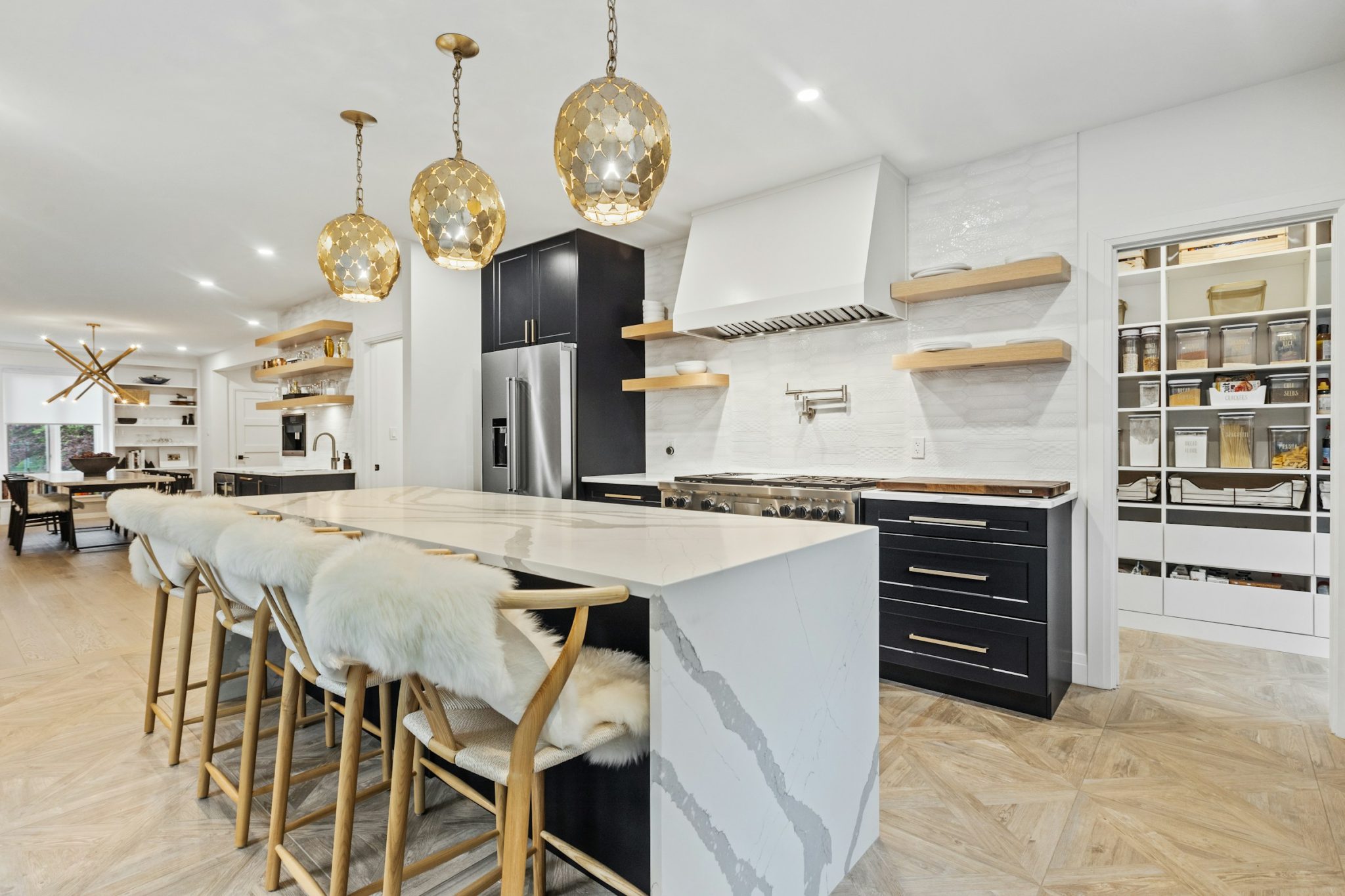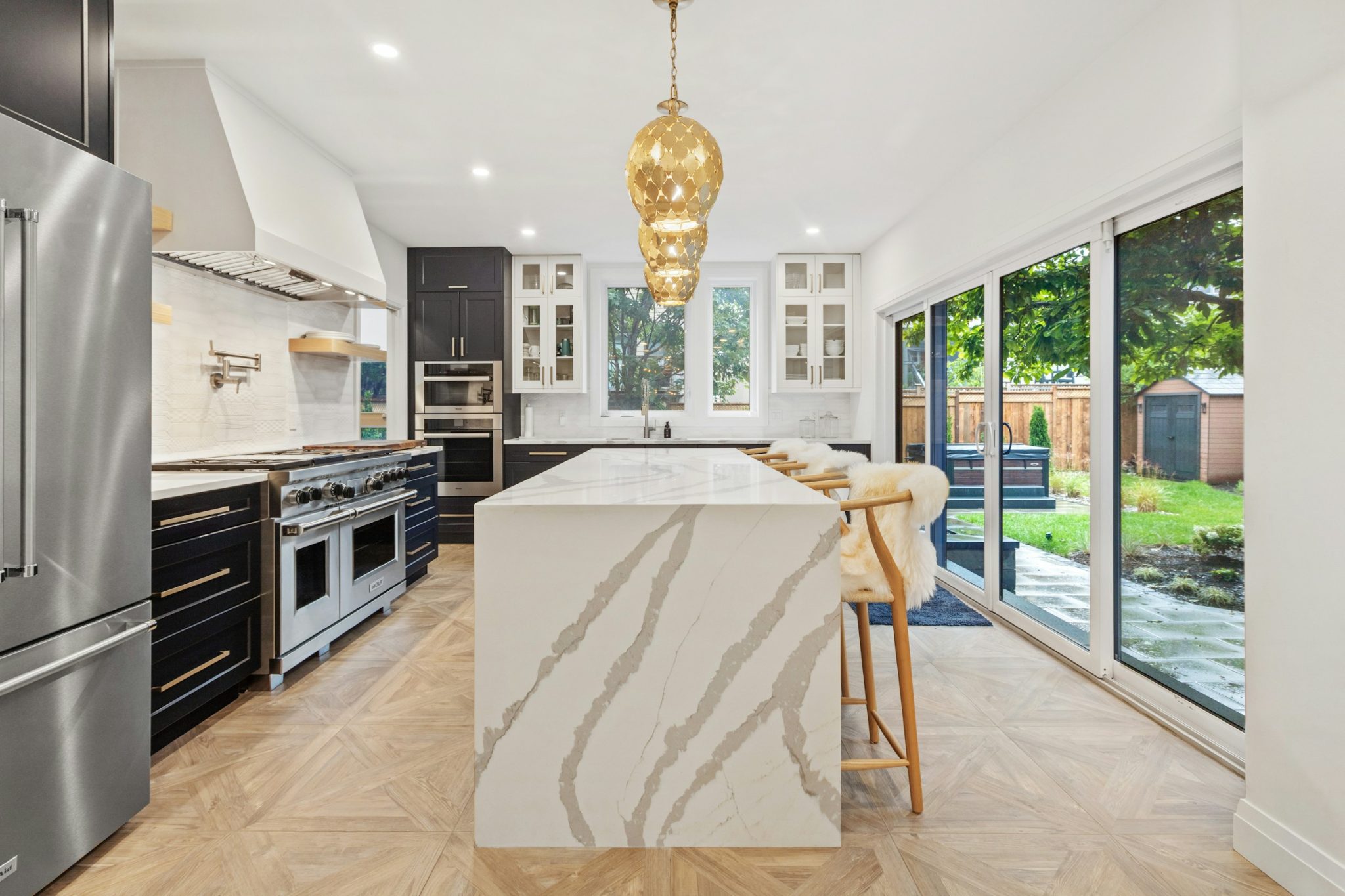Marble benchtops have long represented the pinnacle of luxury within home design, exuding elegance and a timeless aesthetic. From kitchen renovations to new builds, more homeowners are turning to marble to elevate their interior spaces.
In this comprehensive guide, we’ll explore the allure of marble benchtops and address common concerns, trends, and the long-term value they provide for your home.

Table of Contents
The Timeless Allure of Marble
Marble has been a staple in architectural and interior design for centuries, renowned for both its natural beauty and historic connotations with opulence. The veined patterns, often resembling flowing water or natural landscapes, provide a unique touch to each slab, ensuring that no two pieces are alike. This individuality and history make marble benchtops a striking addition to any kitchen, serving as both a functional workspace and a statement piece.
The Perfect Choice for Classic Elegance
For those seeking a kitchen aesthetic that transcends trends, marble is the ultimate choice. Its ability to lend an air of classic elegance to any space is unmatched. Pair it with dark wood for a stately feel, or with clean white cabinetry for a fresh, minimalist look. No matter the kitchen style, marble benchtops have a chameleon-like quality, effortlessly adapting to complement the rest of the design.
Versatility Meets Authenticity
A marble benchtop is a testament to the skill of nature’s craftsmanship, with its unique veining showcasing the stone’s natural beauty. This authenticity is something that cannot be replicated by synthetic materials, and it’s what continues to draw homeowners to marble. While it’s luxurious, marble doesn’t necessarily impose a specific style, making it a versatile option for various design tastes and kitchen types.
Addressing Maintenance Myths
One of the most significant reservations homeowners have about marble benchtops is maintenance. There is a widespread belief that marble is a high-maintenance material, prone to staining and scratching. However, with proper care and sealing, these concerns can be effectively managed.
Weekly Care for Long-term Beauty
Regular cleaning with mild soap and water, followed by drying with a soft cloth, is often all that’s needed to keep a marble benchtop looking its best. It’s vital to avoid harsh chemicals or abrasive cleaners, which can erode the protective seal. Additionally, resealing your marble every few months can ensure it remains resistant to stains and water damage, extending its lifespan.
Stain Resistance and Durability
Modern sealants are highly effective at preventing liquids from seeping into marble and causing stains. When spills occur, prompt cleaning is crucial. Contrary to popular belief, marble is not as fragile as it is sometimes made out to be. It’s a durable material that can withstand the demands of a busy kitchen, especially when treated with care.
The Cost of Elegance: Understanding the Investment
Pricing for marble benchtops can vary greatly, depending on the type of marble and the supplier. While marble is not the most affordable option, its cost is reflective of the quality and prestige it brings to your kitchen.
Investment in Quality and Value
Marble is a substantial investment in your home’s value. The luxurious look and feel it provides can increase the appeal of your property, potentially influencing resale value. Homebuyers often gravitate towards homes with high-quality finishes, and marble remains a strong selling point in the real estate market.
Cost vs. Benefits
When considering the cost of marble, it’s essential to weigh it against the benefits it provides. In terms of aesthetics and longevity, marble benchtops offer more value than many other materials. They do not age or go out of style, making them a sound investment for homeowners who value durability and design.
Staying Current with Marble Trends
While the appeal of marble is its timeless elegance, trends within the design world do influence the way we use this material. From the classic Carrara to the statement-making Calacatta, different types of marble come in and out of vogue. Additionally, the way marble is used in the kitchen is evolving.
Classic Varieties for Enduring Appeal
Carrara marble is a timeless choice, with its soft, feathery veining and a predominantly white base. This classic variety remains a favorite, offering a clean and bright aesthetic that suits both traditional and contemporary kitchens. Other timeless varieties such as Statuario and Nero Marquina continue to be popular due to their striking contrasts and elegant coloring.
Innovative Design Approaches
Beyond the classic slab, homeowners are finding innovative ways to incorporate marble into their kitchen design. Waterfall edge benchtops, book-matched slabs, and sculptural culinary spaces that feature marble are some of the inventive applications we’re seeing. These creative approaches showcase the material in new and exciting ways, bringing fresh perspectives to this enduring stone.
Sustainability and Environmental Impact

The environmental impact of using natural materials is an increasingly important consideration for both homeowners and designers. Marble is a natural stone, which means it’s an inherently sustainable choice. However, the process of quarrying and transporting marble does require careful management to mitigate environmental effects.
Certified and Responsible Sourcing
To ensure that the marble you choose is sourced responsibly, look for suppliers who can provide certification of their quarrying practices. Certifications such as the Forest Stewardship Council (FSC) and others indicate that the marble has been sourced in an environmentally responsible and sustainable way, with proper consideration for local ecosystems and communities.
Recycled and Second-Hand Options
For those who are particularly focused on sustainability, recycled marble or second-hand slabs can be an excellent option. These repurposed materials reduce the demand for new quarrying and contribute to the circular economy. While it may take some effort to find the right piece, the environmental benefits can be significant.
- About the Author
- Latest Posts
Whether she is researching the latest trends in home decor, life-changing destination getaways, or the best way to maintain your finances, Dewey takes pride in leaving no stone unturned. She is passionate about distilling and delivering high-quality information that you can use to upgrade your life.

